Mirror of Threads Blankets by Emdal Colorknit
The Danish artist tames a German knitting machine from the ’80s to produce symbolic colors and unusual patterns


Designer Signe Emdal has an affinity with the year 1984. That’s the year her 1.25-ton German knitting machine was made, as well as the Nikon camera she uses to create patterns from photos. However, Emdal (who entered the industry in 2006 by helping fellow Dane Henrik Vibskov construct physical knit-samples) is no old school artist: using a mixture of Photoshop, hand-drawings and programming on a ’90s Silicon Graphics PC, and a dash of Danish creativity, she transforms graphics into not-so-typical knitted textiles (lovingly called “hugs”), whose iridescent colors and multiplex patterns have become the trademark of her label, Emdal Colorknit.
From scarves and kimonos to dresses covered with warrior-print patterns to her stunning, new collection of blankets, Emdal is constantly exploring and developing new techniques while pushing technical boundaries to tease new patterns out of the old machine (which was a machine originally intended for making clothing textiles, resulting in unusually soft blankets and scarves with a garment-like quality and feel).
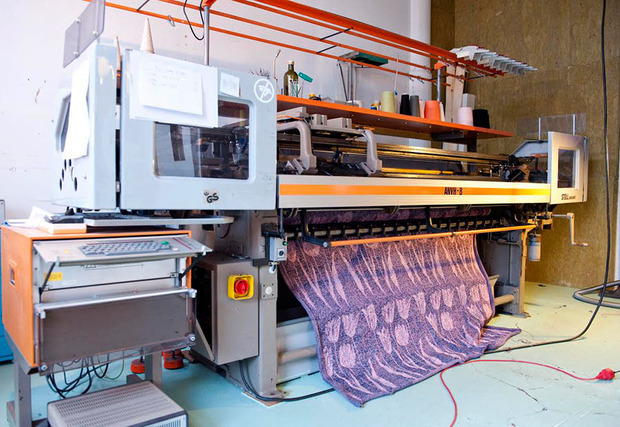
This season’s collection of blankets—called Mirror of Threads and made from a blend of merino wool and Egyptian cotton—are the upshot of years of experimentation. This is the first time she made the blankets right at the machine. Because the blanket’s “frame” fits perfectly to this specific machine, there is zero waste material, and Emdal also developed a finish at the blanket’s edges so she only has to stitch the tiny corners—eliminating any other sewing.
“Some of my friends call the machine The Whale, because it looks like a big orange whale, and it sounds kind of slow and meditative,” says Emdal. “I work daily on a vintage tool that belongs in a museum collection. No factories use this tool anymore; it’s simply too slow. But I like slowness,” she tells CH.
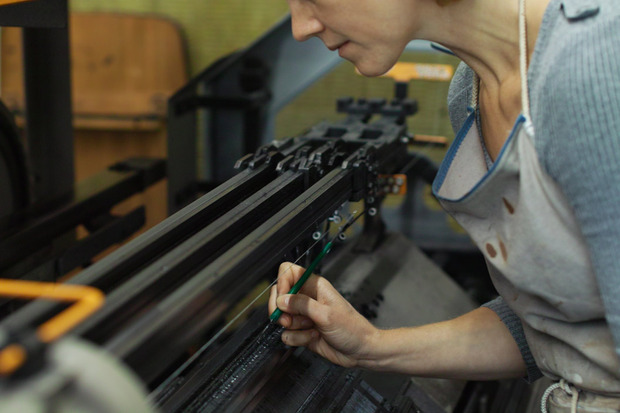
While fully fashioned knitting (where machines are programmed to produce custom shapes ready to be sewn together instead of rectangular textiles where piece would then need to be cut out) is the norm in factories today, Emdal’s machine was built before this technology was available—so the fact that she was able to accomplish this is a feat in itself. But, while the functions are the same as modern production, her finished look is visually different—as well as the concept behind the intricate designs in each piece.
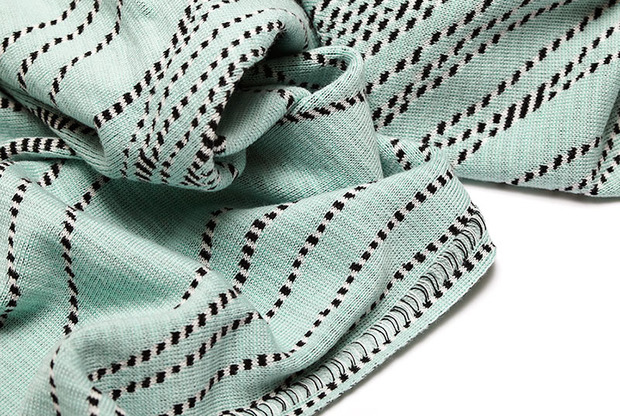
…you must study it closely and some day you will be able to collaborate with your tool in such a way that nobody else would ever be able to…
“I love limitations. It’s the best drive ever, because I can get much much deeper into the work and my experiments when limited by the tool,” Emdal tells CH. “Pattern-making for this specific tool is an experience thing. You try and try and try and try until you figure out what works and what doesn’t. I did this for almost 10 years, so now I’m able to tell you if your digital pattern will look nice, by first sight in Photoshop.
I made many, many ugly fabrics (and beautiful), but the key point here is that no matter what tool you use, you must study it closely and some day you will be able to collaborate with your tool in such a way that nobody else would ever be able to do it—even if they have top modern tools. You develop a sort of ‘personal style’ with your tool, just like musicians with their instrument. It’s love!”
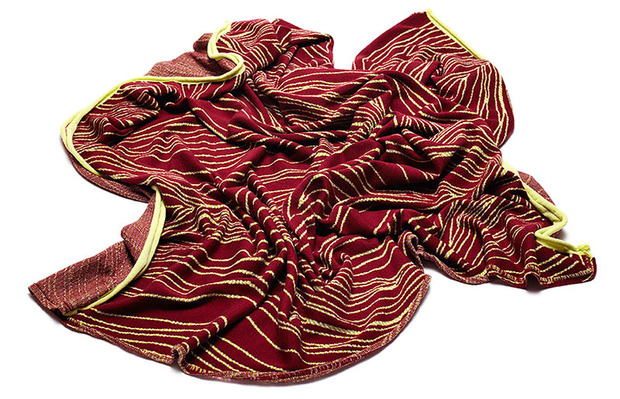
“I was very much inspired by nature’s ways of ‘collaborating.’ Plants, eco-systems and how everything is dependent on each other. How everything is combined; working together, within a huge grid of threads, roots and spiderwebs,” says Emdal regarding her Mirror of Threads collection. “Humans naturally do exactly the same thing, connecting with each other in huge structural grids. Everything is a collaboration. Even if you see yourself as independent, you are not. You always need other people at some point. Your life is made of threads—we all have our own threads, but we are also connected with everybody else’s threads.”
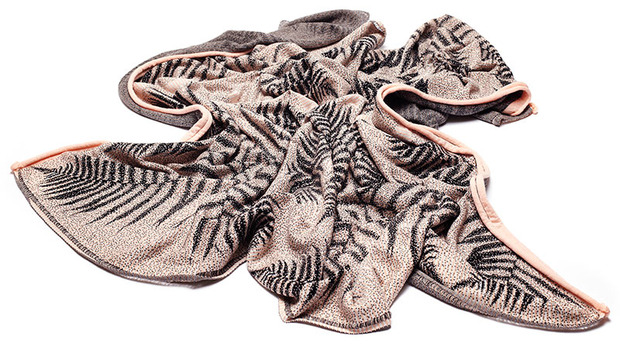
One of the more striking features of Emdal’s textiles is the range of colors that she utilizes. “I understand colors as something divine. To me, the color you are attracted to at a certain time is a clear mirror of your life. If you have some knowledge in color symbolism, you will for sure be able to ‘read’ a lot about me. It is said that I am old-fashioned and ahead of the present moment with my visual style. That’s why it all seems to be so odd, but attractive to a lot of people,” says Emdal on eschewing colors based on trends. “The blanket is like a canvas, and the yarns are just like paint,” but most importantly, they’re also practical, soft and beautiful—”three things very important to Danes,” says Emdal.
Emdal Colorknit blankets are €264, produced in editions of no more than 50 and are available from the designer’s webshop along with her new Autuchromes scarf collection.
Images courtesy of Emdal Colorknit












